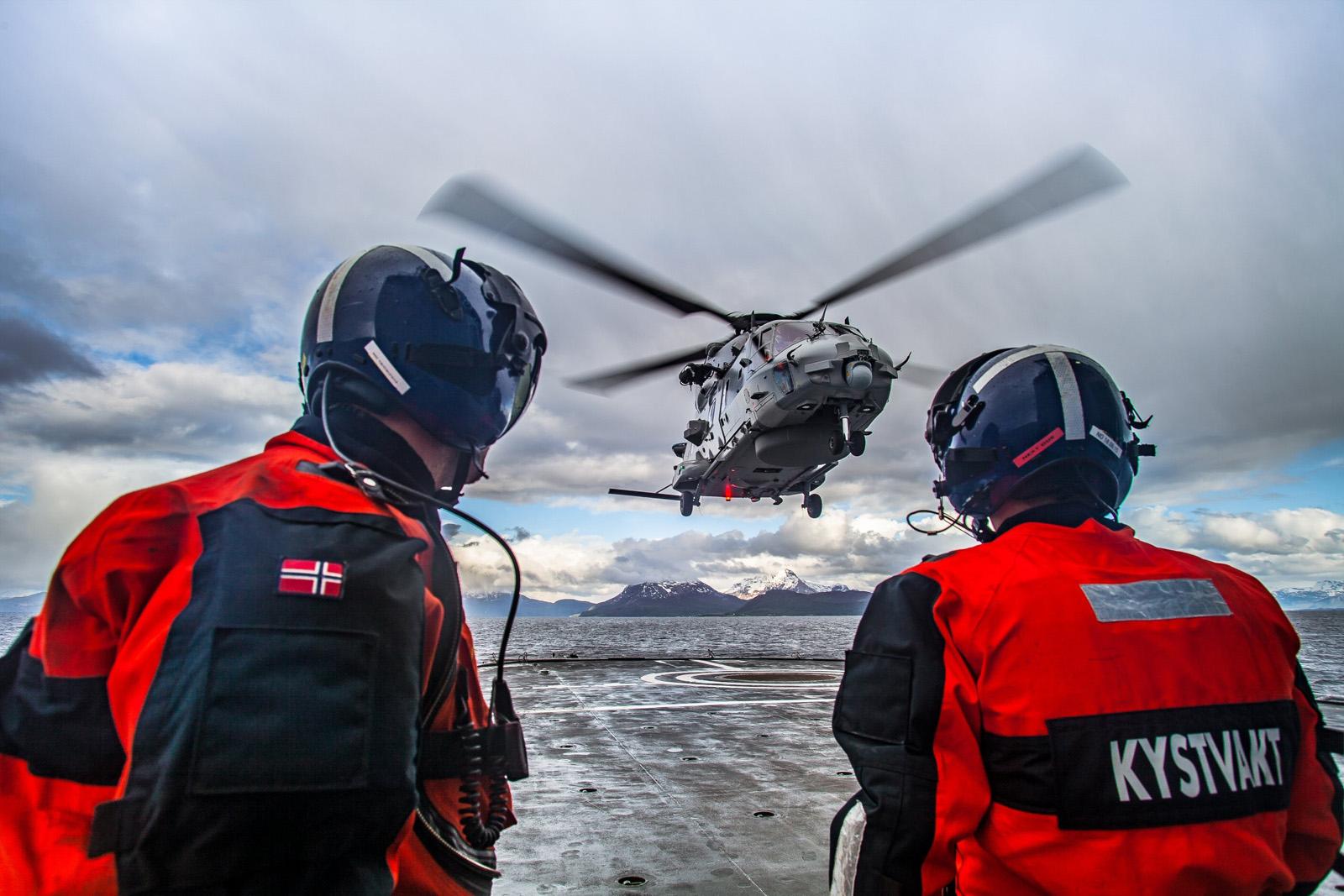
Frustrated with the poor availability of its NH90 naval helicopter fleet, Norway has decided to call it a day with the European rotorcraft.
Oslo has permanently halted operations of the platform as of June 10 and sent manufacturer NHIndustries—a joint venture of Airbus, Leonardo and Fokker—a program termination notice.
The Norwegian Defense Ministry will return the aircraft to the manufacturer and says it expects a refund of NKR5 billion ($522 million)—equivalent to how much it has paid out, plus interest and other expenses.
“No matter how many hours the personnel work, and no matter how many parts we order, NH90 will not be able to meet the needs of the armed forces,” Norwegian Defense Minister Bjørn Arild Gram told a press June 10 conference.
The decision to halt the program comes just months after Australia declared it was examining options to replace its NH90s with Sikorsky Black Hawks. Like Norway, Australia has been frustrated by availability issues and the high cost of ownership.
Norway contracted for 14 NH90s in 2001 for use on the back of its coast guard ships and frigates. The fleet had been due to enter service in 2008. But just eight of the helicopters have so far been delivered in the full operational capability (FOC) variant. Others remain either in an initial operating configuration or are undergoing an extensive retrofit program to bring them into the FOC configuration. Norwegian officials say the aircraft had been due to fly around 3,900 hr. annually but are currently only flying an average of 700 hr.
An evaluation of Norway’s maritime helicopter capacity has said that even with “large extra investment in the fleet” it would not be possible to bring flight-hour levels to those required by the Norwegian armed forces.
“I am impressed with the efforts of the organization and all those who have worked hard to get NH90 to deliver,” Norway’s Chief of Defense Gen. Eirik Kristoffersen said. “It is not about a lack of effort, creativity and competence, but solely about the fact that we have received a helicopter that has not delivered operationally.”
Oslo is now beginning work on finding a way to fill the capability gap left open by the NH90s, which are used for search and rescue and anti-submarine warfare missions.
“Maritime helicopters are something Norway must have,” Gram said. “We will look at several different alternatives to meet the operational needs, but we must be prepared for the fact that there is no easy solution.”
Defense officials had been examining a potential lease of commercial helicopters to make up for shortfalls in NH90 availability.
Potential alternatives could include Sikorsky’s MH-60R Seahawk, a type in service with Denmark, or Leonardo’s AW101 platform, a type already in service with Norway in the search-and-rescue role and flown by the country’s air force.
Gro Jaere, the director of Norway’s defense materiel agency, said, “we have repeatedly tried to solve the problems in collaboration with the supplier. But more than 20 years after the contract was entered into, we are still without helicopters that can do the job they were bought for, and without the supplier being able to present realistic solutions to the problems.”
In response to the Norwegian decision, NHIndustries said it considers the contract termination to be “groundless” and refuted the allegations about the helicopter and against the company.
“NHIndustries was not offered the possibility to discuss the latest proposal made to improve the availability of the NH90 in Norway and to address the specific Norwegian requirements,” NHIndustries said in the emailed statement.
The company stressed that it remains “absolutely committed to addressing the concerns previously expressed” and claims to have already laid out “appropriate and tailored solutions to the table” to meet Norway’s requirements.
NHIndustries management has previously disclosed that a 22-point plan was instituted in 2021 to improve fleet availability and speed up its retrofit programs, which can see the helicopters sitting in a hangar for up to two years. Airbus had also hoped to address the issues in Norway through a new maintenance arrangement with Kongsberg in a bid to strengthen local capabilities.


